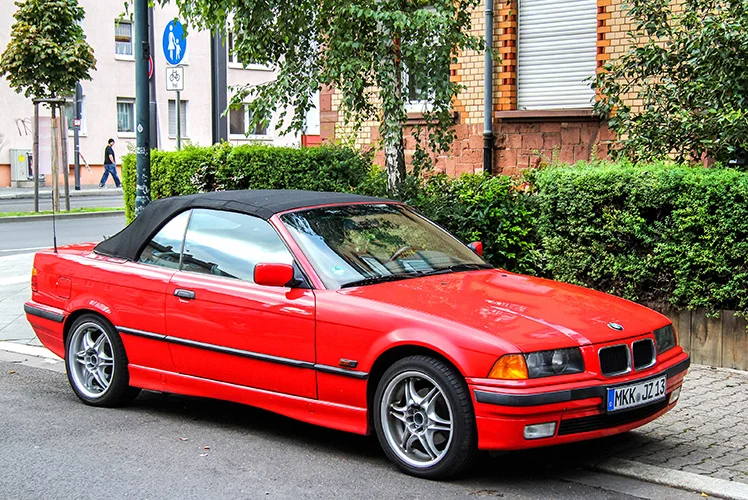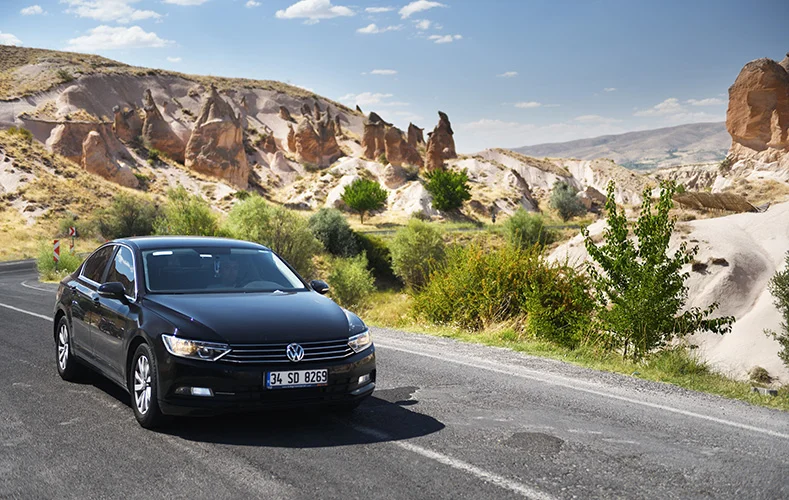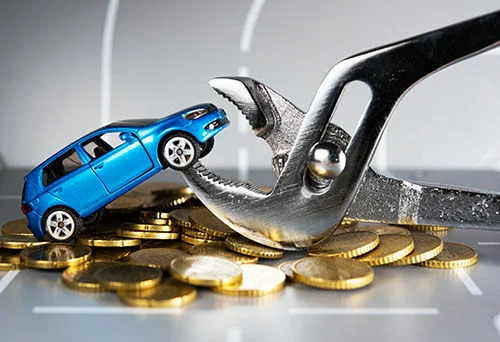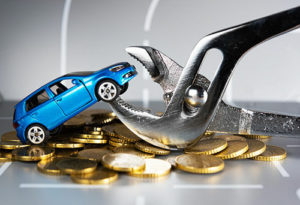BMW E36 is one of the classical models. Developed in 1990, it can still be seen in racetracks.
The BMW E36 is a compact executive car considered to be one of the classical models. It was produced by German automaker BMW from 1991 to 1999 and again from 2000 to 2006, replacing the E34 generation of vehicles. As for configuration, it has an inline-six engine that had been in production throughout its history.
The legendary series has a huge following and can still be seen in racetracks. Many BMW enthusiasts love to tune their E36 for performance purposes. However, tuning the BMW E36 is not an easy job. You need to know what will work best with your car and how much power you want out of it.
This article will discuss some mods that are good for BMWs and helpful tips on tuning them for optimal performance.
Is BMW E36 Hard to Work On?
Not necessarily, but you have to know what will work best with your car. However, if you are a novice, you may not want to meddle with the wires. You can easily break things if you are inexperienced in working with machines of this caliber. Also, they have relatively modern engines making them complicated. E36 is a solid car on the whole with nothing too scary to worry about.
Is BMW E36 Reliable?
BMW E36 is an older model, but it was always well known for its reliability. It does have many problems and is well trusted among car enthusiasts. It’s not uncommon to see BMW E36s with 150,000 – 200,000 miles on the clock. They can usually go 300,000 miles or more with good maintenance.
How Many Miles Can a BMW E36 Last?
BMW E36 is a solid car with nothing too scary to worry about. It’s not uncommon to see BMW cars with 150,000 – 200,000 miles on the clock. Past that, you can expect general wear and tear issues like radiator leaks and coolant system failure.
Having said that, a BMW E36 series usually lasts for 300,000 miles or more if maintained well. E36 track cars are known to go smooth even with 500,000 miles on the odometer.
How Much Horsepower Does a BMW E36 Have?
Most BMW E36s have a stock power of 205 bhp, which is a figure that many have been trying to increase. The BMW 3 series has an aspirated inline-six-cylinder engine producing an output of 146 bhp.
Car enthusiasts have been tweaking the cars with performance kits. Remapping also increases the power while bumping up the horsepower.
How Can I Get More Power Out of My BMW E36?
E36s are not slow by any means. However, you will lose power after a couple of decades due to general wear and tear.
Upgrading and modifying E36 engines can help increase the power. Here are a few methods you can follow to get more power out of your E36:
Engine Swap
As the name indicates, you swap the engine with one from another car. Since the chassis is pretty big, you can swap the standard inline six cylinders with a V12. While this is not the norm, it is the extent of how much you can push it. However, it is a complex task and takes quite a lot of skill. And not to mention the time. So ensure that you have someone skilled by your side.
Engine Build
Engine build refers to the process of building custom engines from scratch. You can use parts from other engines or acquire them from any other sources, even aftermarket.
A rebuild can provide you with a horsepower of 350+ hp and 7,500+ RPM. Here are some of the components you may have to replace for better results:
Rods: Longer rods can increase the displacement of the motor. That way, you can improve the capacity to 3.3 liters from the stock of 2.5 liters. It also increases the compression ratio from 10.5 to 12.5+ and helps withstand the higher cylinder pressure.
Crankshafts: A two-piece rod with a larger diameter makes for longer throws. The longer configuration also allows the rods to reach their complete lengths.
Camshafts: An improved camshaft helps to increase the amount of air inside the chamber. This, in turn, allows significant quantities of exhaust gases to escape.
Pistons: Reinforced pistons that can handle high cylinder pressure and improve compression.
Valve Springs: A stiff and robust valve spring helps withstand the high lift created by the camshaft. It also helps increase the rev limit.
Bearings: Stronger bearings help to withstand the high forces created during combustion.
Solid Lifters: It allows the engine to rev higher without collapsing.
Keep in mind that rebuilding is not cheap. As seen above, you would be replacing the entire rotating assembly.
Forced Induction
Forced induction helps the engine draw in more air (thereby more fuel) than done by the vacuum alone. There are two ways to go about this: Turbochargers and Superchargers. They both work by compressing the atmospheric air. This process increases the number of oxygen molecules per volume. On the downside, they spin the compressor in two different ways.
A turbocharger uses exhaust gases to drive a turbine. The turbine is connected to a compressor via a common shaft. On the other hand, a supercharger spins the pulley (via a belt) using the crankshaft.
What Engines Fit in a BMW E36?
BMW E36 uses inline six-cylinder engines with a spacious engine bay. This allows you to fit any configuration up to a v12 in the bay. Here are some of the engines that can fit in a BMW E36.
BMW S50: A 3.0-liter six-cylinder with a 240 hp and 225 lb/ft torque. The exterior features are similar to the E36; hence can be used as a drop-in replacement. It also uses the same OBD1 computer system. Due to the similarities, it works as a cheap alternative. On the downside, this doesn’t yield much power.
BMW S52: 3.2-liter six-cylinder with a 240 hp and 240 lb/ft torque. The features are pretty similar; hence works as an easy replacement and at a low cost. However, the OBD11 computer system engine is quite difficult to integrate. And not that much boost in power than your current configuration.
BMW S54: 3.2-liter six-cylinder with a 333 hp and 262 lb/ft torque. Though it has dimensions similar to that of an E36, there is a measure of difficulty involved. However, considering the swap is successful, it gives you good power with options for more modifications. On the downside, the computer system and sensor integration will be complicated.
BMW S62: A 4.9-liter V8 with a 400 hp and 369 lb/ft torque. While this configuration offers an excellent boost in power, it is custom mounted. The complete assembly is quite expensive.
Ford 5.0: A 5.0-liter V8 with a 220 – 300 hp and 300 lb/ft torque. Good power and potential for more modifications are the advantages of this configuration. They are also not as expensive as the other custom mods. However, you require a lot of other parts for a good fit.
GM LS: A 5.3-liter to 6.0-liter V8 with a 300 – 400+hp and 350 – 400+ lb/ft torque. You can source it from various GM and Chevrolet models. It has quite a lot of advantages, including great power and potential for future modifications. They can also be lightweight when compared to the stock. On the downside, you would have to source quite a lot of parts to make a complete engine which would be expensive.
Is BMW E36 Fast?
BMW E36 is quite fast with a top speed of 155 mph (250 kph). It has a fast pickup and can go from 0 – 60 mph (0 – 100 kph) in about 5.5 seconds.
Despite the speed, it is also a well-balanced car and fun to drive. However, you are not going to win any races unless you do some serious modifications and tuning.
Tuning BMW E36
The E36 popularized the new six-cylinder inline engine. They are famous for their steady power, high potential for modification, and balanced performance. The E36 was far ahead of its time when it was launched in 1991. However, it is still a classic design, coveted by collectors and car enthusiasts 20 years later.
Tuning BMW E36 isn’t only about retrofitting the engine for more power. The tuning scene follows its own trends depending on the changing times. The tuning trends were more flashy in the past with a loud exhaust, lowering, pulled wheel arches, and fancy rims. However, in recent times they have been more discreet.
Another trend popular with tuning enthusiasts is map optimization. It is pretty simple but helps to lighten the load on the purse. Map optimization or chip tuning refers to electronically optimizing the injection system.
Tuning BMW E36 is quite standard among BMW enthusiasts, particularly in recent times. There are quite a lot of performance parts available in the market. Above all, you can also exchange parts with other BMW models and power up your BMW E36.
Here are some modifications you can make to get the best out of your BMW E36.
Software
Software tuning is one of the most common modifications to make on the BMW E36. There are various types of software tuning available in the market. While some you can download and install on your own, others require professional installation.
If you are looking for an easy way to increase power, software tuning is the best choice. It does not require much knowledge and can be done at your own pace. Few are as easy as a plug-and-play software chip.
For example, performance software such as the Shark Injector. The benefits include:
- Unlocks torque and horsepower
- Rev limit increased to 7,000 RPM
- Improved throttle response
- Smoother engine with less hesitation
- Removes the top speed limiter (governor)
- EWS delete frees up the spare ECU for the engine
- Installs in minutes
Furthermore, the software changes algorithms that handle the ignition timing, camshaft movement, and fuel injection. Own a vehicle and an M50 OBD1 manifold? Use an appropriate software tune to increase the output.
Engine Tuning
To get the most out of your BMW E36, you need to make sure that the engine is tuned to match your vehicle’s needs. There are quite a lot of tuning options available.
For example, you can increase the power with a custom intake or exhaust system. You can also go for an ECU remap to optimize the performance of the vehicle.
You will require professional installation in case of any tunings. It’s recommended that you have them installed by experts only. These are high-performance modifications that can affect the engine if not done the right way.
You can also use an older inlet manifold to increase the RPM range. It increases the airflow at high RPM, giving you another 15-20 hp. However, the bigger manifold will hurt the bottom end power since it reduces the low RPM.
Engine Conversion
The conversion or swapping is where you swap the engine with another one. It can be either from another BMW model or a different make and model.
An engine swap with a 3.0-liter M3 motor is a pretty straightforward process than a 3.2 liter. This is because the 3.0 connects directly to the existing wiring and the 5-speed gearbox. In this case, your obvious choice is an M3.
If you are looking for additional power, you can take full advantage of v8 engines, with the M62 being the obvious choice. However, you can also go for an E34 V8 with a five-speed gearbox and a prop shaft from E36 M3 EVO.
Having said that, the swap also presents a few challenges. You will need some experience, specialized tools and techniques, welding, and life.
Which Is Better, M50 or M52?
Both engine blocks are said to be bulletproof and quite famous among collectors. This is because they have outstanding longevity with proper care and maintenance. However, M50 is considered to be one of the most reliable engines ever built. It is also more robust than its counterpart since it is steel rather than aluminum (M52).
Transmission
If you are looking to improve performance, your engine should be able to handle the extra power. There is no use putting an additional 20 bhp into a standard transmission.
The BMW E36 has limited space for transmissions. So they need to be replaced or modified firsthand. If you are looking for a more durable option, you can go with the M20 transmission. It can handle up to 300 bhp of power.
Transmission swaps like LSx and Ford T-45 Viggen will need heavy modifications on your car’s chassis. You may also need to use custom mounts available in the market for this purpose.
Differentials and Brakes
There are different types of BMW E36 performance options you can go for. But there is no substitute when it comes to brakes or wheel bearings. Performance brakes work more efficiently on BMW E36 by providing a tighter grip and better overall performance.
Improve your braking system by using cross-drilled rotors and high-performance pads. When used with suitable materials, they provide minimal fade during heavy braking. You can also opt for stainless steel brake lines. They ensure less expansion under pressure as well as increased braking performance.
When it comes to the BMW E36 upgrade, the most effective way is going for a limited-slip differential. It will give you better control and more efficient power transfer while cornering hard. In addition, this eliminates understeer and oversteer, making your car safer to drive at high speeds.
Intake
The intake manifold can be replaced with BMW E36 performance kits. They help to increase the torque and horsepower of your vehicle. It is an easy process that doesn’t require too much DIY experience or tools. Ensure that you use parts compatible with BMW E36 series cars.
Or, you can use the Shark Injector Software to equip your car with a high-flow performance cold air intake. And switch the intake manifold from OBD2 to OBD1 version. This also improves the horsepower and torque quite a bit. These mods help your E36 to achieve a steady and consistent power.
Wheels
When BMW E36 performs, your car’s wheels and tires must be able to handle the additional power. You will need a better tire grip to improve the overall performance of BMW E36 series cars.
There are so many aftermarket rims available for BMW, but nothing beats BBS LM wheels. They are similar to BMW E36 performance wheels but at a higher cost.
You can also opt for Kosei K-RAD and replica BBS RS that look pretty close to the original ones.
Exhaust
The performance exhaust gives your car a better throttle response and increased horsepower. You can also get more sound from the engine, which is suitable for BMW purists.
A full exhaust setup will cost you. Instead, you can go for a lightweight dual exhaust measuring 2.38 inches and made of stainless steel. The bigger exhaust expels the exhaust gases fast, allowing for increased performance.
Using BMW exhaust headers and BMW performance mufflers helps to increase horsepower. But, it is a long process that involves drilling holes into head pipes, modifying them, and 1223
welding them in place. You will need experience or professional help for an exhaust upgrade.
Conclusion
Are you looking to tune your BMW E36? Well, that’s a great decision. BMW has made some of the most iconic and sought-after cars in history. The BMW E36 is no exception.
The car is famous among collectors for its potential for modifications and tunings. There are many different types of BMW tuning available for BMW E36s. They can be split into two categories- mechanical and electrical.
Mechanical mods are usually cheaper than electrical ones. But they require more work on the part of the owner if they attempt to install themselves. On the other hand, electrical mods tend to be expensive, but they’re also simpler. All you have to do is plug them in or connect them with an OBD2 port. Either way, BMW tuners are very effective, and BMW E36 owners should look into them!
Tuning BMW E36s is no easy task! It requires some mechanical skill or knowledge about electronics. However, this will help you get more power out of your car while keeping the safety features intact. There are many such modifications you can make to improve the performance of your BMW E36. We hope that this guide helps you make an informed decision when modifying BMW’s most iconic cars.
For over 45 years, Little Germany is a certified Service Center that specializes in full service and repair services for German-made cars such as the BMW E36. Contact Little Germany for all your auto repair needs. If you need service after our normal business hours, please fill out our After-Hours form.











 Annual Repair Costs of a MINI
Annual Repair Costs of a MINI Cons
Cons Here are some of the
Here are some of the  For over 45 years, Little Germany is a certified Service Center that specializes in full service and repair services for German-made cars.
For over 45 years, Little Germany is a certified Service Center that specializes in full service and repair services for German-made cars. 
 Sports cars may be anything from a two-seater to a track car or even a front-engined grand touring coupé. Here’s a list of the best
Sports cars may be anything from a two-seater to a track car or even a front-engined grand touring coupé. Here’s a list of the best  European cars, particularly those from Germany, are among the most expensive cars. But they are rightly so and for the below
European cars, particularly those from Germany, are among the most expensive cars. But they are rightly so and for the below  American Cars vs European Cars
American Cars vs European Cars What American Car Holds its Value the Best?
What American Car Holds its Value the Best? Are Japanese Cars Better than German Cars?
Are Japanese Cars Better than German Cars?